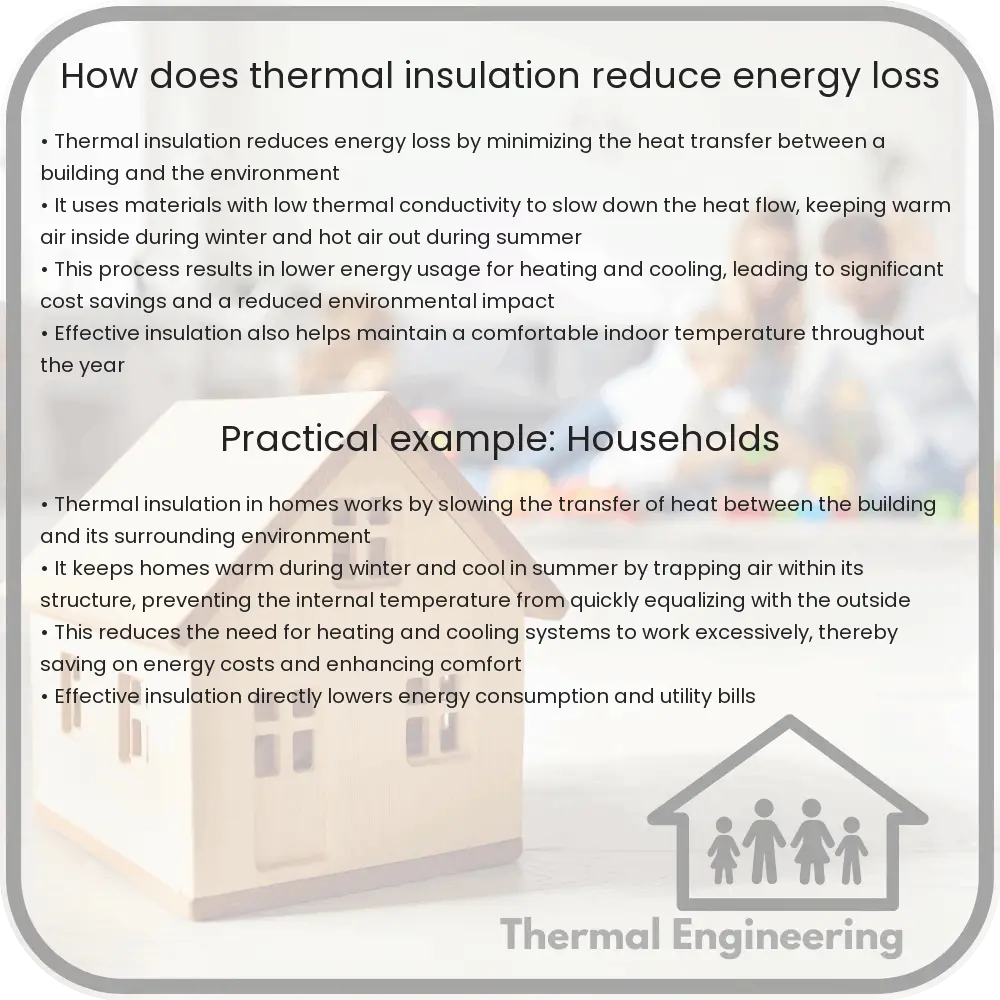Learn how thermal insulation enhances energy efficiency by limiting heat transfer in buildings, using materials like fiberglass and polystyrene to reduce energy loss.

Understanding Thermal Insulation and Its Role in Reducing Energy Loss
Thermal insulation is a critical component in the engineering of buildings and various industrial applications. Its primary role is to limit heat transfer between objects in thermal contact or within range of radiative influence. By doing so, thermal insulation helps in enhancing energy efficiency and sustainability in heating and cooling systems.
How Does Thermal Insulation Work?
Thermal insulation materials work by reducing the rate of heat transfer, which can occur through three principal mechanisms: conduction, convection, and radiation. Each of these mechanisms is targeted specifically by different types of insulation materials.
- Conduction: Heat transfer through materials by direct contact. Insulators with low thermal conductivity impede this process, usually through trapping air or other gases within their structure, as gases are poor conductors of heat.
- Convection: Heat transfer through fluids (liquids or gases) that are caused by molecular motion within the substance. Insulation prevents or reduces convection currents within its structure by being composed of cells or fibres that limit the movement of air.
- Radiation: Heat transfer through electromagnetic waves that can travel through a vacuum. Reflective insulators, such as those with a metallic surface, can reflect radiant heat, reducing the amount of heat that is absorbed.
Materials Used in Thermal Insulation
Common materials used for thermal insulation include the following:
- Fiberglass: Consisting of fine strands of glass woven together, this material traps many small pockets of air, reducing heat conduction.
- Polystyrene: Available in solid or foam form, it is an excellent insulator with a structure that inhibits heat transfer.
- Cellulose: Made mainly from recycled paper that has been treated with a fire retardant. It is packed tightly in building cavities, hampering airflow.
- Mineral wool: Includes rock wool and slag wool, made from rock or ceramics. It is dense and thus highly effective at reducing convection and trapping air.
- Reflective insulation: Utilizing aluminum foils to reflect radiant heat, which prevents heat gain particularly in hot climates.
Energy Efficiency and Cost Effectiveness of Thermal Insulation
By reducing the amount of heat transfer, thermal insulation makes heating and cooling systems much more energy-efficient. This efficiency translates into reduced energy use, which not only lowers utility bills but also decreases the environmental impact associated with energy production and consumption.
The effectiveness of thermal insulation is measured in terms of its R-value, which indicates the material’s resistance to heat flow. Higher R-values mean greater insulating power and more significant energy savings over time.
Moreover, the initial cost of installing insulation is often offset by the subsequent savings on energy bills. In many cases, insulation projects can pay for themselves through these savings within a few years.
Conclusion
Thermal insulation plays a crucial role in boosting energy efficiency in both residential and industrial settings. By understanding the basic principles of how insulation works and the materials used, one can appreciate the science behind energy savings and the environmental benefits it brings. Investing in good-quality insulation not only helps in reducing energy costs but also contributes to a more sustainable future.